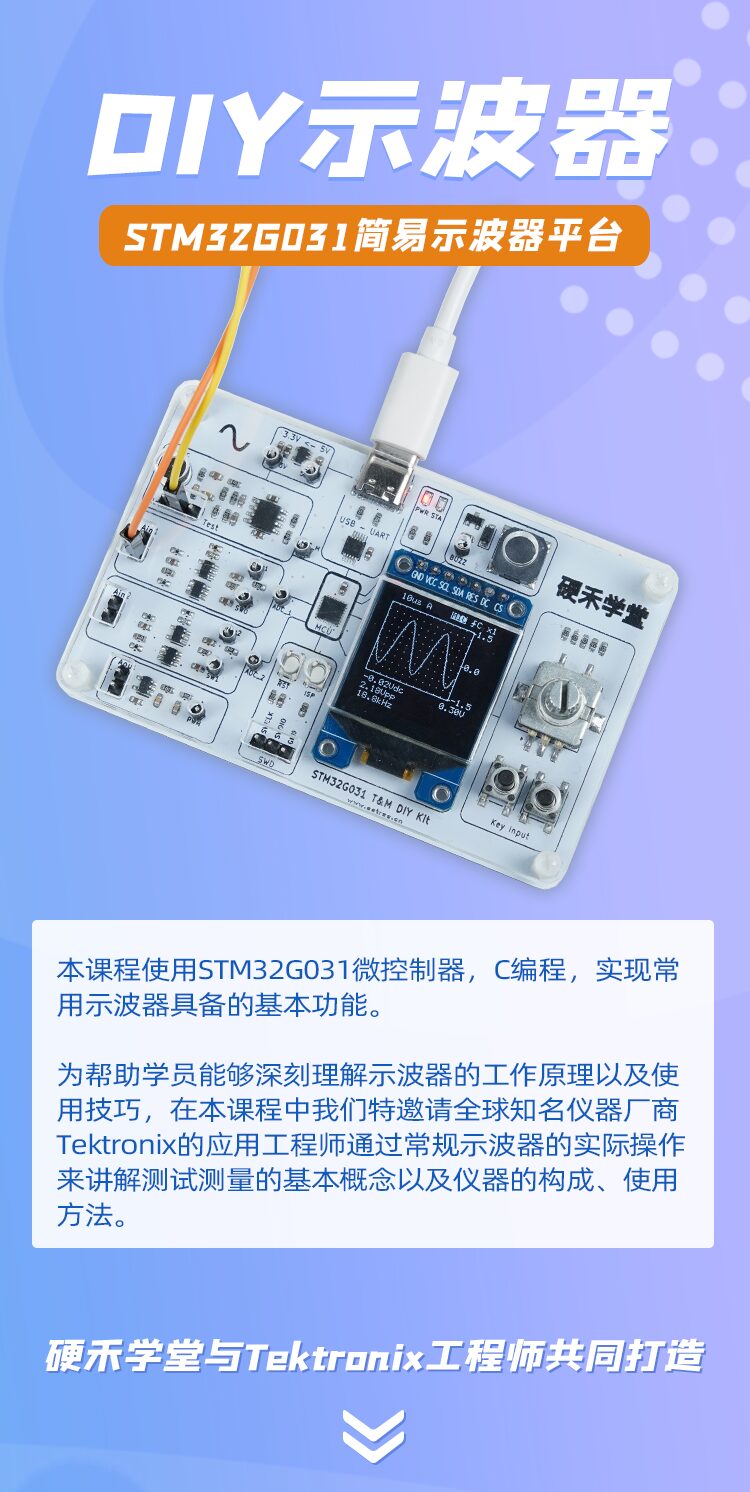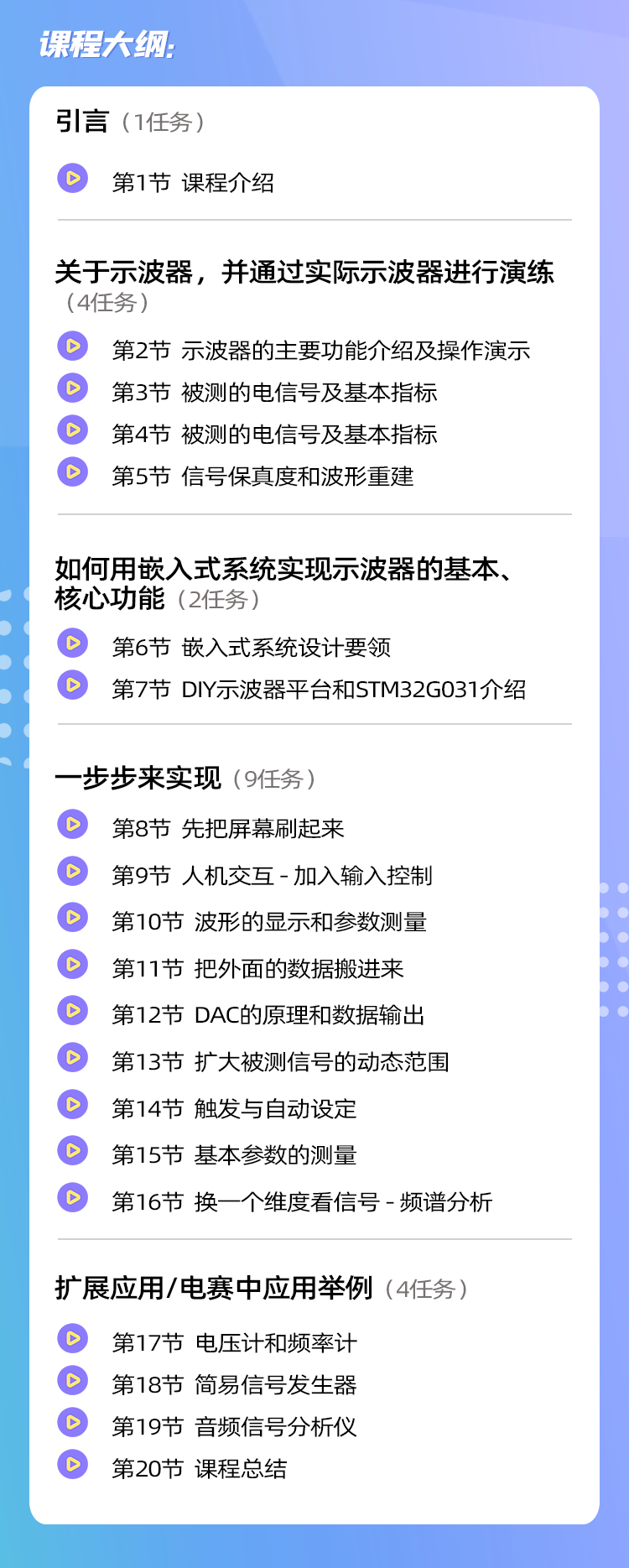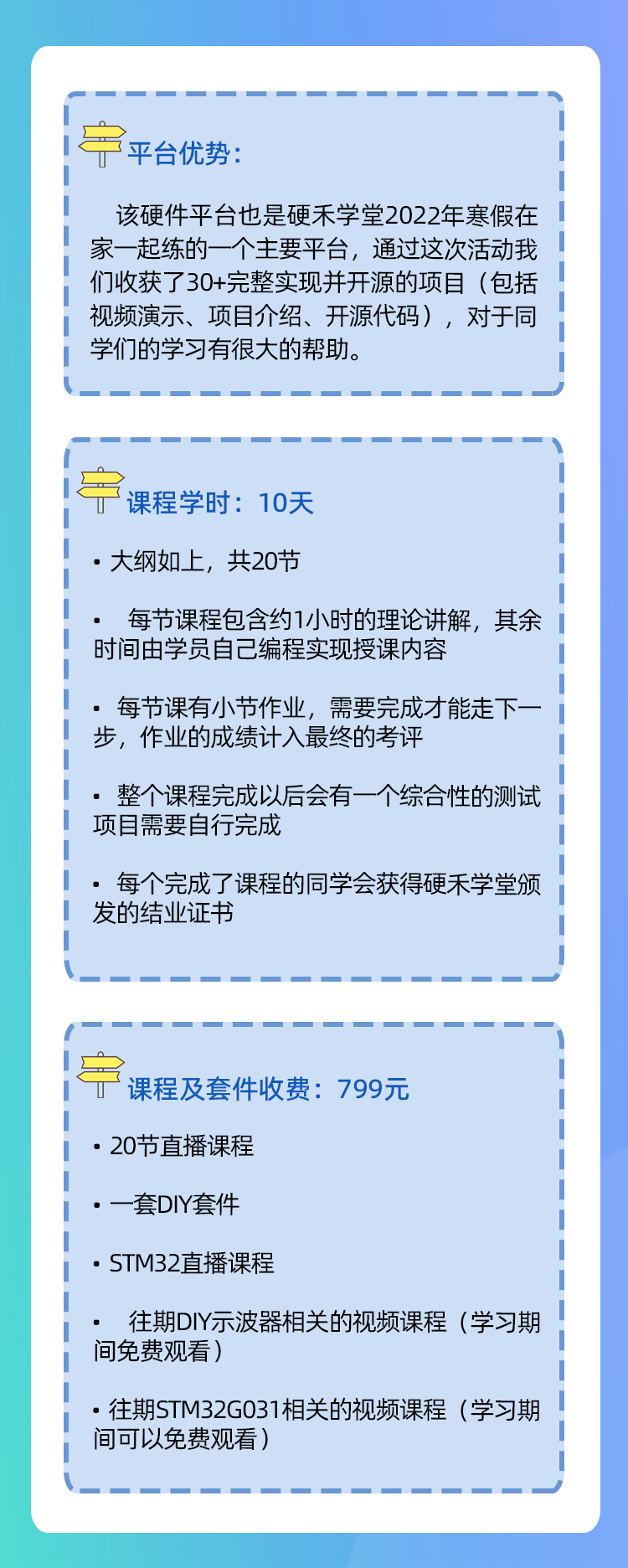Every hardware engineer learning embedded systems should have DIYed an oscilloscope at least once, not only because this process allows you to truly touch the soul of embedded systems, but also to deeply understand the core concepts of testing and measurement – after all, when you personally collect waveforms, display them, and measure parameters, the entire process will clarify those vague concepts like resolution, dynamic range, bandwidth, sampling rate, storage depth, etc. that are encountered during oscilloscope usage. You will also have insights into mechanisms such as triggering, equivalent sampling, and interpolation.
From then on, you will become a master in using testing and measurement tools.
It’s a win-win situation, isn’t it?
What you invest is 10 days of summer time + 799 yuan in course fees.
To turn this course into a high-quality offering, we at Hehe Academy spent half a year compiling various materials based on our winter vacation activities in 2022, which had over 10,000 views and more than 30 excellent open-source shared projects. We invited senior application engineers from Tek to co-produce this premium course, and of course, we received strong support from the globally renowned instrument manufacturer Tektronix!

The STM32G031 microcontroller we specifically selected is a cost-effective MCU chip and a general-purpose controller that ST will focus on in the future. It is precisely its limited resources that allow us to deeply understand how to effectively squeeze every bit of memory, ensuring smooth and perfect execution of each task even when multiple tasks need to be processed simultaneously.
This is not something an ordinary development board can teach you.
This course focuses on embedded programming while also explaining the basic characteristics of electrical signals, the working principles of instruments, and operational methods, all accompanied by hands-on practice.
See the course outline below:

It is not only a complete embedded system + testing and measurement platform that can perform functions of an oscilloscope, signal generator, and even a spectrum analyzer, but also on the Electronics Forest project platform, there are already powerful users who have completed and open-sourced source code, project reports, etc. after a month of hard work during the winter vacation.
These rich learning resources can provide learners with more references and inspiration.

This course will officially launch on July 18, and students who subscribe to this course can watch the live courses and replay the already aired sessions permanently.